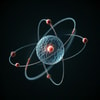Energy and Metabolism PDF
Document Details

Uploaded by AdequateClavichord
Tags
Summary
This document discusses energy and metabolism, including homeostasis, anabolism, and catabolism. It explores concepts such as kinetic and potential energy, and highlights the role of enzymes.
Full Transcript
Energy and Metabolism Homeostasis: The ability of the body to maintain a stable internal environment in response to external pressures Metabolism: All of the chemical reactions in the body’s cells that convert fuel from food into the energy needed to function Anabolism: Result=Creation of new cel...
Energy and Metabolism Homeostasis: The ability of the body to maintain a stable internal environment in response to external pressures Metabolism: All of the chemical reactions in the body’s cells that convert fuel from food into the energy needed to function Anabolism: Result=Creation of new cellular material (Enzymes, proteins, cells, cell membranes, and tissues) (Building up). Catabolism: Result=Bread down complex molecules into simpler ones (for energy production, for recycling of their molecular components, or for their excretion) (Breaking down). Energy coupling: Energy generated by catabolic processes is harnessed by cells to perform anabolic processes. Kinetic energy: The energy of motion. An object in motion has kinetic energy. Forms: Vibrational, rotational, and transitional. Potential energy: Energy stored because of position/arrangement of the object. ATP and energy storage: Cells store energy in a molecule called adenosine triphosphate (ATP). The ATP molecule has three phosphate groups attached to it which are held together by high energy bonds. If one of these bonds is broken, a great amount of energy is released which can be used in an endergonic reaction. (Energy is released when ATP is hydrolyzed: ATP+ water ADP + inorganic phosphate) Enzymes, Kinetics, Photosynthesis Things that enzymes do: Replicate DNA, cut DNA, help make cheese, metabolize alcohol, etc. Why do we need enzymes? Most biomolecules are stable & happy inside the cell. Enzymes allow reactions to happen at a useful rate. Usually end in “ase”. Are very powerful, highly specific and short-lived. Mostly proteins. Catalyst: chemical agents that change the rate of a reaction without being consumed. Enzymes are biological catalysts. Substrate: the starting substance Product: what you end up with. Activation energy: the initial investment of energy needed to start a reaction. Coenzyme: an organic molecule that an enzyme requires to work (eg. NAD, FAD, ATP). Cofactor: an inorganic molecule that an enzyme requires to work (eg. metal ions). Types of enzymes: Enzyme Function Oxido-reductases Electron transfer. Oxidize=Loss of electron Reduce=gain of electron Transferases Transfer functional groups from one molecule to another Hydrolases Add or remove water Lyases Cleave chemical bonds Isomerases Promote the rearrangement of molecules (change isomers). Ligases Form bonds between two substrates Cellular Respiration